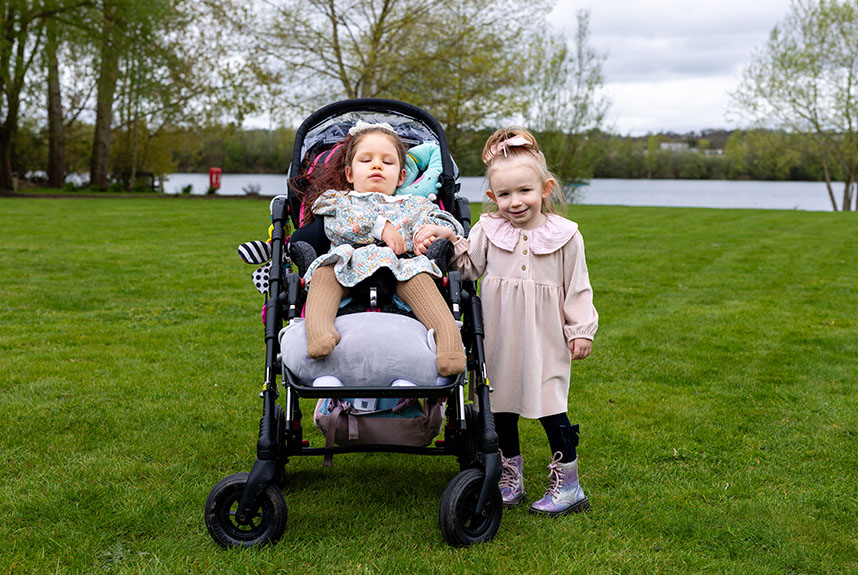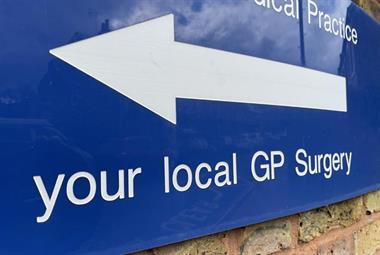This article is sponsored by Orchard Therapeutics
Many agree on the importance and benefit of early intervention in disease management. In the context of type 2 diabetes, for example, with the right care and support, cases can be prevented or put into remission according to Diabetes UK. For the years 2021-2022, it estimates that 4.3m people were living with a diagnosis of diabetes in the UK, approximately 6% of the UK population*.
Another family of diseases accounts for similar percentages of patients; in the same period, the National Institute for Health and Care Research (NIHR) estimates that 3.5m people (or 5% of the UK population) were living with a rare disease, of which there are over 7,000 different types.1 That research found that 75% of rare diseases affect children and more than 30% die before their 5th birthday.
To put it differently, 1 in 17 people may be affected by a rare condition at some point in their life: does it mean that collectively rare diseases are not so rare as we may think?
Recognising a rare disease can be challenging
By their nature, individual rare diseases have a low incidence and prevalence so a GP may not see many patients if any, in their professional career. Combining this with initial signs and symptoms that may be subtle and non-specific, means that a rare disease can go unrecognized or lead to a misdiagnosis or to a harmful watch-and-wait approach, reducing the chances of a prompt intervention and positive patient outcomes.
One example of this is metachromatic leukodystrophy, or MLD, a rare disease estimated to affect 1 in 100,000 newborns. The condition is due to the deficiency of an enzyme caused by mutations in the ARSA gene. This rare inherited lysosomal storage disease results in the accumulation of sulfatides in the central (CNS) and peripheral nervous system (PNS) which leads to progressive demyelination, neuro-inflammation, neurodegeneration, and the accumulation in visceral organs.2
‘The disease progression in the most severe form of the disease (Late Infantile or LI subtype, age of onset ≤30 months) follows a typical pattern,’ explains Professor Simon Jones, consultant in paediatric inherited metabolic disease at St Mary's Hospital in Manchester.
‘Affected young children gradually lose the ability to walk, stand, talk, [and] swallow; they lose their independence and show a steady physical and cognitive regression. Their ability to communicate, express themselves is progressively heavily compromised.
‘They become detached from the world around them, unable to share their feelings, slowly becoming a shadow of their former selves, bedridden until their premature death at a younger age. As this horrible condition devastates these children, it also deeply affects their families, and cares both psychologically and economically, a heartbreaking convergence of negative factors causing an incredible amount of stress for those looking after their sick child.’
Dr Dipak Ram, consultant paediatric neurologist at the Royal Manchester Children’s Hospital, adds: ‘Unfortunately, the subtleness of this condition frequently results in a diagnostic odyssey; young patients are often referred to several specialists in an attempt to manage the symptoms appearing at different stages of disease progression, the result of a gradual accumulation of sulfatides in the tissues and organs.
‘In the late infantile and most severe subtype, for example, the hypotonia, muscle weakness, gait disturbances, abnormal movement patterns, and frequent falls are often the first symptoms that parents or carers notice first, which worry them.
‘They consult their GP, who may or may not refer the young patient to a paediatrician or paediatric neurologist for further investigations. This takes time, and time for these patients is extremely precious. In addition, clinicians may adopt a watch-and-wait approach, hoping that some of these atypical symptoms self-resolve, or provide additional clues on what to do next.
‘Unfortunately, even if this may be the right rationale for other conditions, a late diagnosis in this scenario leads to fatal consequences.’
In the juvenile form of the disease (symptom onset between 30 months and <7 years of age), patients develop the same symptoms, but less rapidly.
Children typically display poor school performance, some behavioural disturbances, and peripheral neuropathies, which may mimic other conditions (e.g., ADHD). As the disease progresses, patients become debilitated, losing gait independence and speech.
Seizures and recurrent pulmonary infections also occur frequently. Despite the slower pace of regression, once these children lose the ability to walk, the disease progresses at a comparable rate to the late infantile subtype.3
The recent approval of several advanced therapies in the rare disease space gives some hope to the patients and their families, a chance to access efficacious treatments so long as the diagnosis is not delayed and before irreversible damage occurs.
‘MLD is [a] horrific disease,’ says Professor Jones. ‘Without newborn screening more children and families will suffer. We do have a chance to prevent this suffering if we act quickly, now is the right time to act.’
*Based on a UK population of 67.5m, source Macrotrends
Useful resources
- Living with Metachromatic Leukodystrophy (MLD), a video showing the challenging journey of Nala’s family as they grapple with the devastating diagnosis of MLD, and the lack of treatment options due to the advanced stage of Nala’s condition
- The unspeakable disease, a tale of two siblings – article from the European Medical Journal, 2023
Orchard Therapeutics
Orchard is dedicated to empowering life and inspiring new possibilities for people affected by certain rare inherited diseases. Through our mission to develop one-time, disease modifying therapies for a range of devastating genetic conditions, we seek to have a lasting effect on children, families, caregivers and society.
References
- NIHR. Rare Diseases Research Landscape Project Report. September 2023. Available at: https://www.nihr.ac.uk/news/uk-rare-disease-research-landscape-mapped-for-first-time/34498
- Fumagalli F et al., Lentiviral haematopoietic stem-cell gene therapy for early-onset metachromatic leukodystrophy: long-term results from a non-randomised, open-label, phase 1/2 trial and expanded access. Lancet 2022; 399(10322): 372-83.
- Kehrer C et al., Association of age at onset and first symptoms with disease progression in patients with metachromatic leukodystrophy. Neurology 2021; 96(2): e255-e266.
IE-NoP-2400005| DOP: Apr 2024








.jpg)
